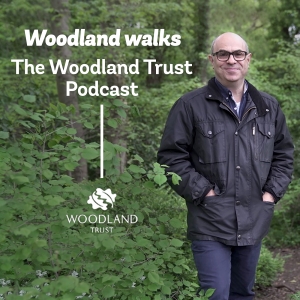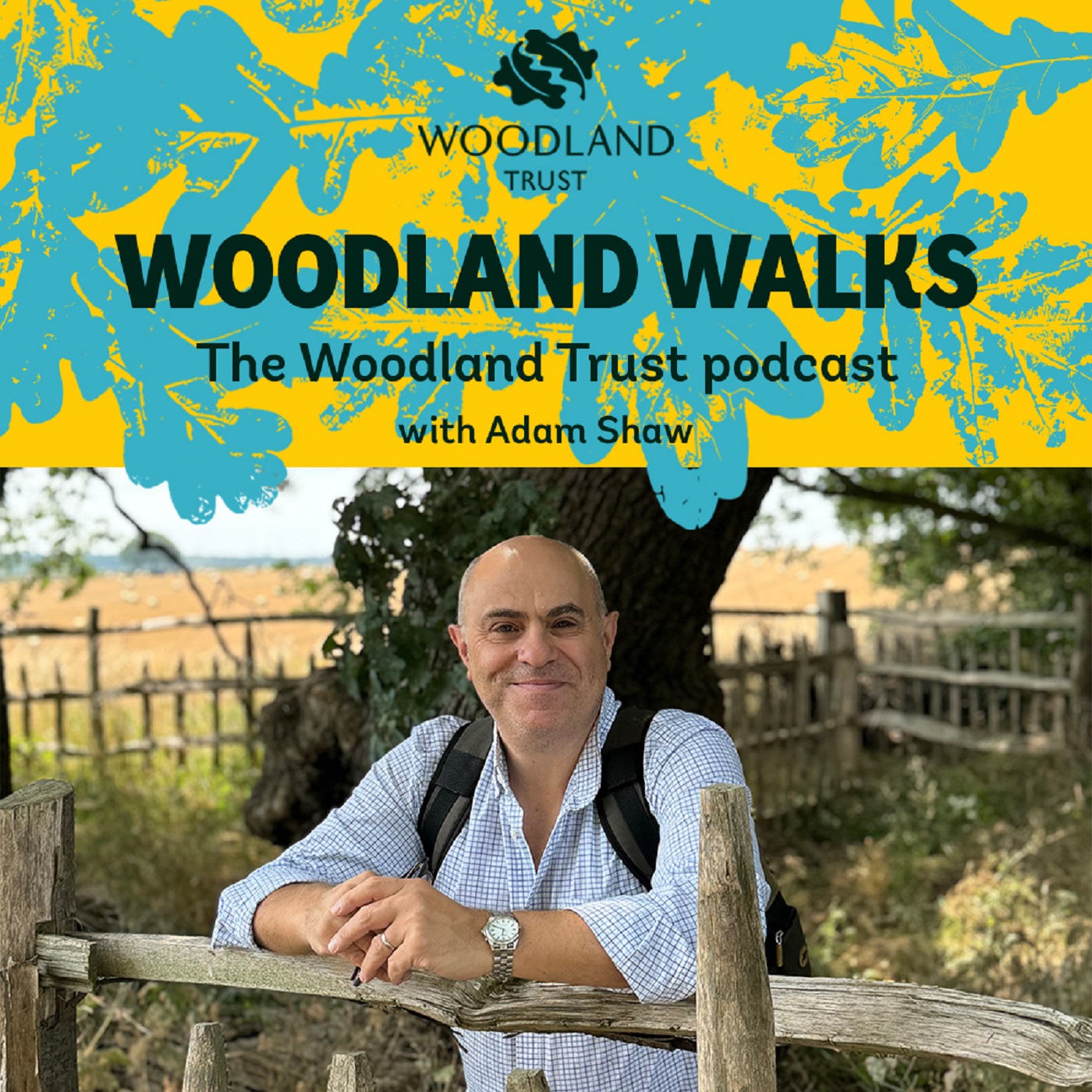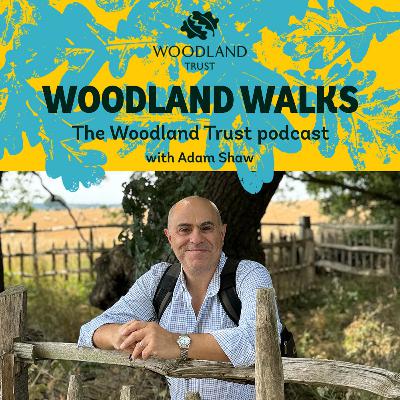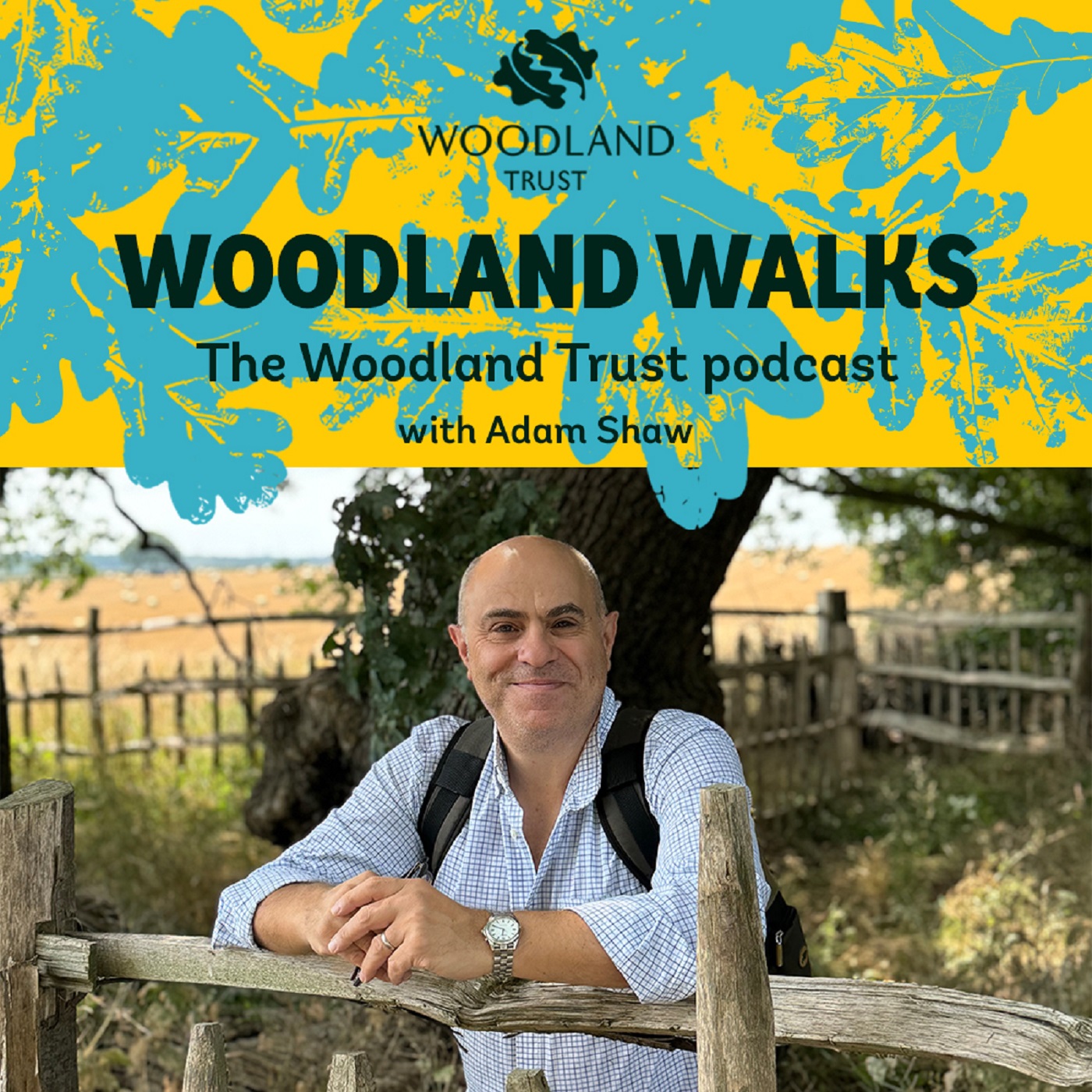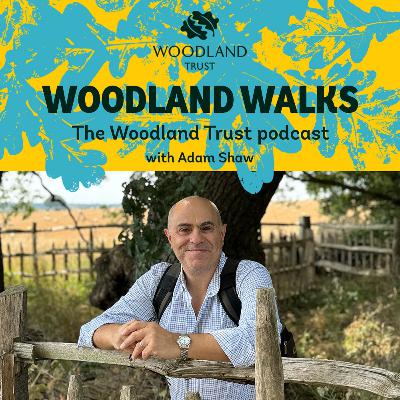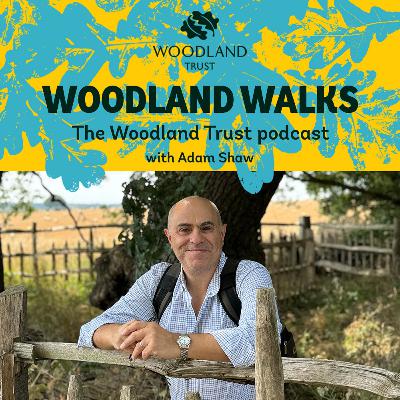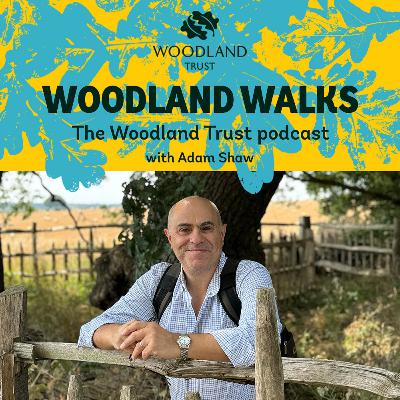15. Tristan Gooley, the natural navigator
Description
You'll never look at a tree in the same way again after this episode. Our guest, Tristan Gooley, is known as the natural navigator and gives us fascinating insight into the stories nature is telling us and how they can help us find our way. At Eartham Wood, West Sussex, he teaches us how each part of a tree can tell us about the land, water and animals around us. I put his skills to the test as we read the captivating clues of brown leaves, leaning trunks, lichens, yew, blackthorn and more. Find out how to determine which way is south, why thorny branches could indicate small animals and if he ever gets lost!
Don't forget to rate us and subscribe! Learn more about the Woodland Trust at woodlandtrust.org.uk
Transcript
You are listening to Woodland Walks, a podcast for the Woodland Trust presented by Adam Shaw. We protect and plant trees for people, for wildlife.
Adam: Well, today I'm off to meet a writer, navigator and explorer who has led expeditions in five continents and I'm told is the only living person to have both flown solo and sailed single-handedly across the Atlantic. He’s known as the natural navigator because he has learned how to find your way through the natural world really by looking at the clues that nature provides us and although he has travelled the world doing some extraordinary adventures, I’m meeting him much closer to home in a forest near Chichester. And that's important because he says, actually, the globetrotting is, in a sense a diversion. And, and the lessons about the natural world and practical things we can take from that can be found actually so much closer to home. His book, How to read a tree, has just come out, which tells you a lot about how to read the natural world around you, and I'll definitely be talking to him about that. Anyway, I'm off to meet him, which is a bit of a joke because I am the world's worst navigator and my first problem, as ever, is of course he is not where I think he is, but I've called him and he's going to come out of the forest and wave, so I'm off to look for a man who's waving.
Tristan: My name is Tristan Gooley, also known as the natural navigator, because of my lifelong passion in the the wonderful art of natural navigation, finding our way using nature and I'm gonna lead you into my local woods, Eartham Woods to have a look at some of the clues and signs we can find in trees.
Adam: And how did you get into all of this?
Tristan: Well, I I loved, I was pretty restless as as a youngster and I loved putting little journeys together. And then the the little journeys became bigger journeys and and through that I I developed, it started as a practical thing. I needed to know how to find my way. And then what happened was as the journeys became bigger and bigger, I had to become a proficient navigator. And there came a point quite a few years ago now, where I realised the scale of the journeys wasn't wasn't making them more interesting. So I turned everything on its head and learned to to find my way using nature and it, and it started with very, very small journeys. Just, you know, using the the sun, the the flowers, the trees and the weather generally as as my guide and just trying to cross a a mile or two of English countryside.
Adam: I mean, I know, you’re concentrating on the UK at the moment. But you have done some amazing foreign trips as well?
Tristan: Yes, and that was that was the the my school, if you like. And it was very much a a self-imposed thing. I loved learning about how to shape these journeys. But as I say it it got to the point where I was staring at kit the whole time I was I was literally staring at screens which had robbed all of the fun. I'd, it I I wasn't a I wasn't the sort of fidgety, 10 year old feeling the wind on my face and crossing, crossing little lakes or or scrambling up hills. I was, I was effectively managing systems and so that's when I when I decided to turn it on its head and and go for much smaller journeys. But try and understand how how nature is making a map and quite often a compass for us.
Adam: That itself surely has its own contradictions, because it seems to me what you're talking about is relearning some lost arts. The very nature of the fact that they are lost arts makes them hard to relearn. So how did you do that?
Tristan: Yes, it's it's a really interesting area because the, the, we we lost our connection with land based natural navigation in in a time when there was no writing. So there are very, very few written records. But the good news is navigation is something, and I feel really passionate about this, it is, it is one of the few fundamental skills. If I'm if I'm talking to a group or leading a group, I sometimes say to them, I don't know you, but I'm pretty confident in the last 24 hours you've eaten something, you've drunk something, you've slept, and you've navigated. Those are some of the things that all human beings do by and large. And so what we find is with fundamental things they pop up in in stories. So another another thing is if if you or anyone listening thinks of their favourite story in the world, it can be a blockbuster movie that came out a week ago or it can be an ancient myth, it really doesn't matter, you'll find navigation features in it, so the clues the clues are there. So I combined that with looking at all sorts of accounts of journeys, combined that with my own observations and combined it with research into some quite recent botanical research, for example, and and piecing all those bits together that allow me to to rediscover the art.
Adam: Do you bemoan the fact that we're now so dependent on satnavs? We don't use any of those skills and perhaps don't even see the need for them.
Tristan: No, I see it as a potential win win, but I think it's about an awareness of how the I have this weird thought experiment, I imagine that we each day we wake up with 1,000 units of attention and then it's it's up to us how we spend them. Now work might take 600 or 700 of them and sometimes we have no choice about that. But the question then is what do we do with the ones leftover. There's, there's lots of options there and understanding the clues and signs in nature is not something I expect to, you know, fill fill the available units for everyone. But it is something where we can, we can say, well, actually I'm just going to, I'm just going to give 10 minutes of this day to trying to understand, you know what that insect is telling me, what is that butterfly telling me about what the weather has just done, for example. And then through that it becomes quite a moreish subject because our brain has evolved to do it.
Adam: Yes, I mean, I agree. I mean, I think you know, wandering through the forest as we are now, it's it's not a lesson, it's not like I'll get extra points for knowing this tree is X tree, but it helps you engage with it, it's quite interesting to go, oh, there's a there's another narrative being told to me that I'm I'm not listening to, I'm not tuned to, but I could tune into that story actually makes the walk a richer walk, doesn't it?
Tristan: Yeah. I I really agree with that and I I'm I'm a bit of a poacher turned gamekeeper in the sense that I wasn't one of those kids crawling around with a magnifying glass looking for beetles, I I discovered it through what started as a fairly pragmatic practical need through through the natural navigation journeys. But what what I have discovered since for myself and others is that there's a there's a very widespread feeling that we ought to connect with nature, that we should feel something, that if we just go and stand in a in a wood that it should somehow magically make us feel something. But actually, our brains have evolved to to be doing things and to be understanding things. And if we think about the animal kingdom, which which we're obviously part of, we're we're not the fastest by a long way. We're not the strongest by a long way. We we don't have the best senses. But the one thing we do really, really well, our one trump card is an ability to to take in a landscape and and understand the patterns and build a more interesting and meaningful picture from what we see than any other creature can. So whether you're talking about a dolphin, a chimpanzee, any any creature you want to name it can probably beat us in some areas, but it can't do what we can do, which is look at look at a, a, a picture or a tree or or or any organism and and derive a more interesting picture and more meaning from it.
Adam: So look, I I feel like I'm aimlessly wandering through the wood here. Are we heading off somewhere specific or we just, we’re just rambling?
Tristan: We're we're going for a bit of a a a bit of a wander there's no no sort of fixed destination but that again is quite I I think it's quite nice I I often like to go for walk and just the sole aim instead of, you know, many, many years ago, the aim would have been perhaps to cross, you know, 30, 30 kilometres of woodland. But now the aim is to perhaps notice a a clue or a sign that that that is is new to me or that I can share. I mean the the view I often take is every single thing we see outdoors is a clue or a sign. And when we take that that perspective instead of sort of thinking, well, maybe there's something interesting out there and if I'm lucky, I'll spot it, if we if we just pause, let's let's pause by this yew tree for example...
Adam: OK.
Tristan: So every every single organism, including every single tree, is is full of meaning, which is another way of saying nothing is random. And if we just come round the side of this one, I'll be able to show you, hopefully this one will be a good one to, so a nice a nice introduction t

